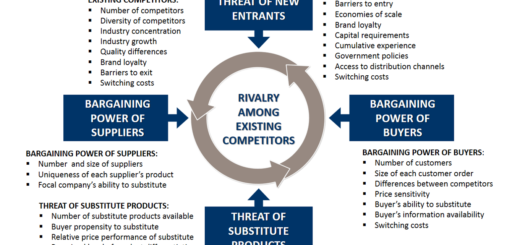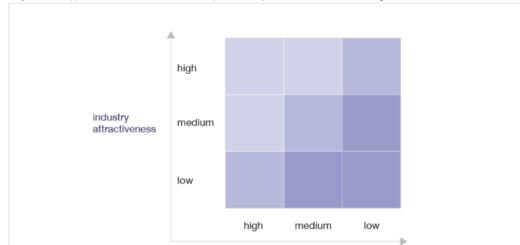Concept of HR Demand & Supply
Contents
HR Planning for ‘future’ external and internal HR supply and demand in organizations.
- Turnover or Wastage (ratios)?
- Annual crude wastage (% of workforce who leave)
- Stability analysis (% of workforce remaining in current job)
- Cohort analysis (% of cohort recruited in particular year who remain)
- Internal promotion analysis (the number of people in staff group who are promoted internally over a year)
The external labour market could be local, national, or international
- Population density;
- Population movements;
- Age distribution;
- Unemployment rates;
- School leavers;
- Proportion of people with Higher education qualifications;
Skill levels.
Internal HR Demand & Supply
Internal HR supply
Internal HR supply refers to the pool of employees within an organization who are available to fill positions that become vacant. This can include employees who are currently in a particular job, as well as those who have the potential to be promoted or moved to different roles within the organization. The internal HR supply is a critical component of HR planning, as it enables organizations to develop their talent pipeline and ensure that they have the right people in the right positions to achieve their strategic goals.
To assess the internal HR supply, HR professionals can use talent management tools such as performance appraisals, skills assessments, and succession planning. Performance appraisals can help identify high-performing employees who have the potential to take on additional responsibilities and contribute to the organization’s success. Skills assessments can help identify employees who have the skills and knowledge needed for different roles within the organization. Succession planning can help identify employees who are ready or near-ready to take on leadership roles within the organization, as well as those who may need additional development or training.
Once the internal HR supply has been assessed, HR professionals can develop programs and initiatives to help employees develop their skills and prepare for new roles within the organization. These may include training and development programs, mentoring and coaching programs, and job rotation or cross-functional assignments. By developing their internal HR supply, organizations can reduce their reliance on external recruitment, improve employee engagement and retention, and build a strong talent pipeline that supports their long-term success.
Internal HR Demand
Internal HR demand refers to the workforce needs of an organization in terms of the skills, qualifications, and experience required for specific positions. It involves analyzing the current and future organizational needs, identifying succession planning needs for critical positions, and forecasting the number and types of positions needed.
To determine internal HR demand, organizations can undertake various activities such as reviewing job descriptions, conducting a skills inventory, and forecasting workforce trends. By understanding the workforce needs of the organization, organizations can develop strategies to address these needs, such as recruiting, training, and development, performance management, and retention strategies.
Analyzing internal HR demand can help organizations to identify potential skills gaps or talent shortages and develop plans to address those challenges. It can also help organizations to ensure that they have the necessary workforce to achieve their strategic goals and meet their business objectives.
Matching Internal HR Demand & Supply:
Internal HR demand and supply are two important factors in workforce planning for organizations. Internal HR demand refers to the workforce needs of an organization in terms of the skills, qualifications, and experience required for specific positions. Internal HR supply refers to the availability and readiness of the current workforce to meet the future needs of an organization.
To ensure that internal HR demand and supply are aligned, organizations can take the following steps:
- Develop Strategic Goals: Organizations should develop strategic goals that will guide their workforce planning efforts. These goals should include specific objectives related to staffing levels, skill requirements, and workforce development.
- Analyze Organizational Needs: Organizations should analyze their current and future organizational needs to identify the types of positions and skills required to achieve their strategic goals. This analysis can include reviewing job descriptions, conducting a skills inventory, and forecasting workforce trends.
- Identify Succession Planning Needs: Organizations should identify succession planning needs for critical positions, such as those with specialized skills or expertise, or those with high potential for advancement. This involves identifying potential candidates for these positions and developing plans to train and develop them for future roles.
- Forecast Workforce Supply and Demand: Based on the analysis of organizational needs and succession planning needs, organizations can forecast their future workforce supply and demand. This involves determining the number and types of positions needed, as well as the skills and qualifications required for those positions. It also involves assessing the readiness and potential of the current workforce to meet those needs.
- Develop HR Strategies: Once the internal HR demand and supply have been identified, organizations can develop HR strategies to address those needs. This may include recruiting, training and development, performance management, and retention strategies.
By aligning internal HR demand and supply, organizations can ensure that they have the necessary workforce to achieve their strategic goals and meet their business objectives. It also helps organizations to identify potential skills gaps or talent shortages and develop plans to address those challenges.
External HR Demand and Supply
External HR Supply
External HR supply refers to the availability and readiness of candidates who are not currently employed by the organization to meet the future workforce needs of an organization. It involves forecasting the external labor market and understanding the availability and quality of candidates who possess the required skills, qualifications, and experience.
Organizations can undertake various activities to assess external HR supply, such as conducting labor market analysis, analyzing demographic trends, and identifying potential sources of candidates, such as educational institutions, professional associations, and social networks. By understanding the external labor market, organizations can develop strategies to attract and retain high-quality candidates.
External HR supply is influenced by various factors such as the unemployment rate, labor force participation rate, population demographics, and migration patterns. By monitoring these factors, organizations can adjust their workforce planning strategies to respond to changes in the external labor market.
Assessing external HR supply is essential for organizations to ensure that they have access to a sufficient pool of qualified candidates to meet their workforce needs. It can help organizations to identify potential skills gaps or talent shortages and develop plans to address those challenges. It can also help organizations to develop effective recruitment and retention strategies to attract and retain high-quality candidates.
External HR Demand
External HR demand refers to the need for an organization to hire new employees from outside the organization to meet its workforce needs. External HR demand can arise for several reasons, including:
- Business growth: If an organization is growing rapidly, it may need to hire new employees to keep up with the demand for its products or services.
- New projects: If an organization is taking on new projects, it may need to hire new employees with specific skills or experience to complete the project successfully.
- Skills gaps: If an organization has skills gaps in its workforce, it may need to hire new employees with the required skills and knowledge.
- Retirement and turnover: If employees retire or leave the organization, the organization may need to hire new employees to replace them.
- Restructuring: If an organization is undergoing restructuring or downsizing, it may need to hire new employees to fill new roles or replace employees who have been let go.
To meet external HR demand, organizations can use various recruitment strategies, such as job postings, referrals, job fairs, and social media. Organizations can also work with recruitment agencies and headhunters to find qualified candidates.
When hiring externally, organizations should ensure that their selection process is fair, objective, and consistent. This may involve using standardized selection criteria, conducting structured interviews, and assessing candidates using job-related assessments and tests.
In summary, external HR demand refers to the need for an organization to hire new employees from outside the organization to meet its workforce needs. Organizations can use various recruitment strategies to meet external HR demand, but they should ensure that their selection process is fair, objective, and consistent.
Matching External Demand and Supply
Matching external HR demand and supply is a critical part of the recruitment process. Organizations need to identify the right candidates to fill their vacancies by aligning the organization’s workforce needs with the availability of qualified candidates in the labor market. Here are some ways to match external HR demand and supply:
- Talent mapping: Talent mapping involves creating a detailed inventory of the skills and experience required for the organization’s current and future workforce needs. This can help organizations identify any skills gaps and target their recruitment efforts effectively.
- Employer branding: Employer branding refers to an organization’s reputation as an employer. Organizations can create a positive employer brand by showcasing their company culture, benefits, and values. This can help attract candidates who are a good fit for the organization and improve the quality of the applicant pool.
- Recruitment channels: Organizations can use a variety of recruitment channels, such as job boards, social media, recruitment agencies, and employee referrals. Each channel has its advantages and disadvantages, and organizations should choose the channels that are most effective for their specific needs.
- Candidate selection: Organizations should use objective and job-related selection criteria when evaluating candidates. This can help ensure that the selected candidates have the necessary skills, knowledge, and experience to succeed in the role.
- Competitive compensation and benefits: Organizations can attract and retain top talent by offering competitive compensation and benefits packages. This can include salaries, bonuses, health insurance, retirement plans, and other perks.
- Upskilling and reskilling: Organizations can invest in upskilling and reskilling their existing workforce to meet their changing needs. This can help reduce external HR demand and fill skills gaps in the organization.
In summary, matching external HR demand and supply requires a proactive approach that involves talent mapping, employer branding, effective recruitment channels, objective candidate selection, competitive compensation and benefits, and upskilling and reskilling. By taking these steps, organizations can ensure that they attract and retain top talent and meet their workforce needs.




